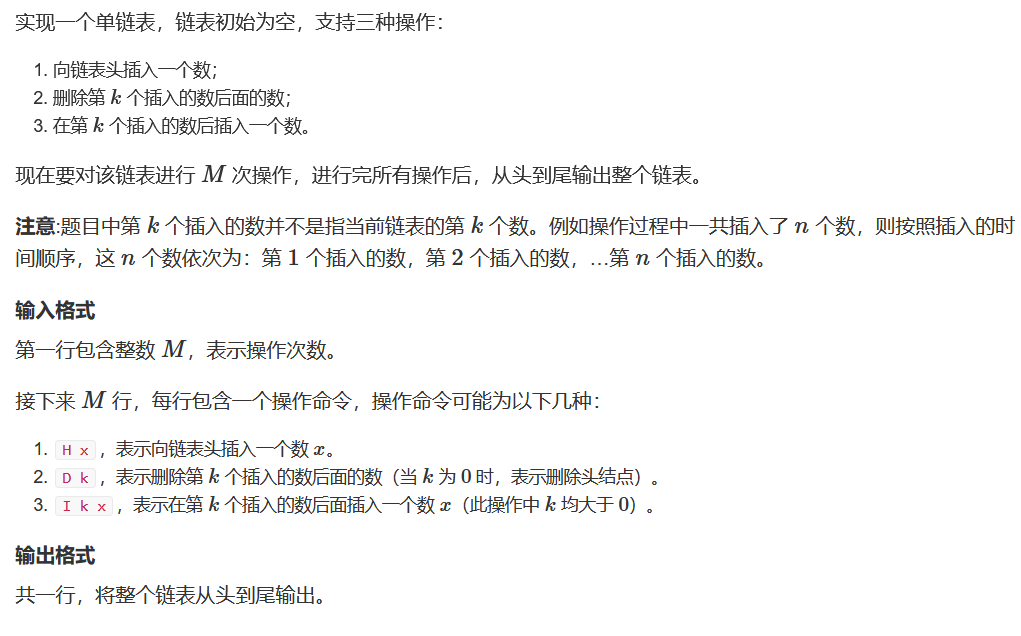题目描述

主要思想
就是利用数组模拟去模拟插入、删除操作
插入包括在头节点和第k个插入的数字的后面插入两种形式
(第k个插入的数字,是从1开始的,每一第k个位置的操作的时候都需要加减1,数组下标从0开始)
需要用到的几个变量
e[],存储当前节点的value
ne[],存储指针,当前节点的下一节点
idx,主要表示的是数组的下标,在进行第k个数的插入和删除操作时,o(1)的时间复杂度内找到ne[idx]
head,存储头节点的下标,初始化的时候记为-1,在链表头部插入一个元素之后更新为0
package dbfs;
import java.io.BufferedReader;
import java.io.IOException;
import java.io.InputStreamReader;
import java.util.Arrays;
public class 单链表 {
/**
* @param args
* @throws IOException
* @throws NumberFormatException
*/
static int M=100010;
static int e[]=new int [M];
static int ne[]=new int [M];
static int idx=0;
static int head=0;
public static void init() {
head=-1;
}
public static void Add_head(int x) {
e[idx]=x;
ne[idx]=head;
head=idx;
//头节点的下标指向idx,此时的idx等于0
idx++;
}
public static void Remove(int k) {
ne[k]=ne[ne[k]];
}
public static void Add(int k,int x) {
e[idx]=x;
ne[idx]=ne[k];
ne[k]=idx;
idx++;
}
public static void main(String[] args) throws NumberFormatException, IOException {
// TODO Auto-generated method stub
BufferedReader bufferedReader = new BufferedReader(new InputStreamReader(System.in));
int n=Integer.parseInt(bufferedReader.readLine());
int k=0,x=0;
init();
//初始化链表,head=-1,表示链表为空
while(n>0){
String pString[]=bufferedReader.readLine().split(" ");
if(pString[0].equals("H")){
k=Integer.parseInt(pString[1]);
Add_head(k);
}
if(pString[0].equals("D")){
k=Integer.parseInt(pString[1]);
if(k==0){
head=ne[head];
}else{
Remove(k-1);
}
}
if(pString[0].equals("I")){
k=Integer.parseInt(pString[1])-1;
x=Integer.parseInt(pString[2]);
Add(k, x);
}
n--;
}
for (int i = head; i != -1; i = ne[i]){
System.out.println(e[i]);
}
}
}

